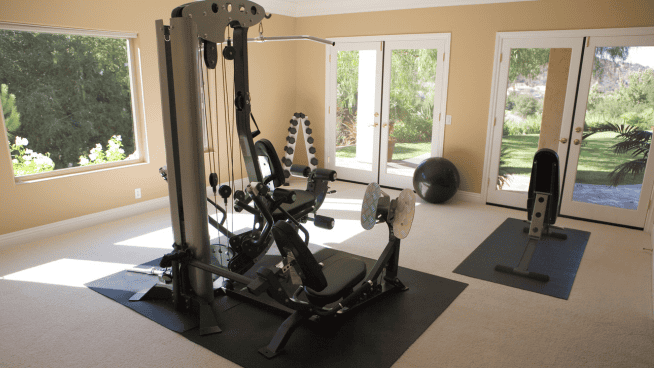Overlooked Benefits that are key to the Psoas Muscles
Now I’m sure many of you have heard of the three hip flexors which comprise the Iliopsoas muscle group (Psoas Major and Minor, and Iliacus). Right now we are going to cover this very powerful and still misunderstood muscle group thoroughly. The reality is that if you want to become your best athletically and remain healthy then you need to emphasize the Iliopsoas in your training program regularly.
Reports from coaches years back showed greater cross-sectional areas of the Psoas muscle group in elite sprinters compared to non-sprinters. This shouldn’t be surprising being that most elite sprinters in this day and age carry substantially lower body mass. Here are the topics that we will be exploring:
#1-Psoas’ Unique anatomy
#2-Specific role in athletic movement
#3-Influence on other local injury types
#4-Top Psoas strengthening exercises!
Psoas Anatomy 101
When you break down and start to observe all the various hip flexors which pass through the front of your hip, you’ll notice a few things. First, some of the muscles originate, insert, and function solely around the hip area (i.e. Iliopsoas, Adductor Brevis) while many others cross down towards the knee and operate at that location as well. This information becomes important since there exist “Sufficiency” rules concerning our working anatomy, which will dictate which muscles we are using and which ones are resting. Fortunately, the Iliopsoas muscles work at the hip and can externally rotate and flex the hip at a specific joint angle. The angle where the Psoas is most active is approaching 90 degrees of hip flexion up to 120 degrees. And when you consider that nearly every single flexion-based activity occurs well below 90 degrees, this poses a problem.
Athletic Movement
The Iliopsoas is going to be most influential in athletic movement which involves primarily high-speed sprinting and hip turn retreating-based movements which can be seen in the video below. With retreating there is going to be more of a focus on the external rotation of the swing leg as you open up the hips and transition backward to make a play.
Weak Illopsoas=Injury
If you or your athlete has ever suffered from IT-band syndrome, quad or hip flexor strains, or pains then there is a very good chance that the Psoas is not contributing enough in training and competition. A simple way to potentially verify this find would be to perform a drill I innovated years ago called; The Standing Psoas Strength Test:
If you aren’t able to perform this drill with a small width resistance band you are at the very least susceptible to hip flexors injuries. Since the body is indeed a Kinetic Chain where each link is interdependent on the next. Weakness in your iliopsoas could also manifest in your hamstrings, abdominals, and lower back.
Best exercises to develop your Iliopsoas
Here is a brief list of exercises that are either anterior core based, plyometric, or involve sprint development work to help target the Iliopsoas best. Keep in mind, that utilizing deeper ranges of motion with your single-leg strength work (i.e. Split squats, lunges, RFESS, and High Box Step-ups) will also do the trick.
Psoas Drills:
High Knee Run Variations:
Retreating Practice:
RFESS Power Jump:
RECOMMENDED FOR YOU
MOST POPULAR
Overlooked Benefits that are key to the Psoas Muscles
Now I’m sure many of you have heard of the three hip flexors which comprise the Iliopsoas muscle group (Psoas Major and Minor, and Iliacus). Right now we are going to cover this very powerful and still misunderstood muscle group thoroughly. The reality is that if you want to become your best athletically and remain healthy then you need to emphasize the Iliopsoas in your training program regularly.
Reports from coaches years back showed greater cross-sectional areas of the Psoas muscle group in elite sprinters compared to non-sprinters. This shouldn’t be surprising being that most elite sprinters in this day and age carry substantially lower body mass. Here are the topics that we will be exploring:
#1-Psoas’ Unique anatomy
#2-Specific role in athletic movement
#3-Influence on other local injury types
#4-Top Psoas strengthening exercises!
Psoas Anatomy 101
When you break down and start to observe all the various hip flexors which pass through the front of your hip, you’ll notice a few things. First, some of the muscles originate, insert, and function solely around the hip area (i.e. Iliopsoas, Adductor Brevis) while many others cross down towards the knee and operate at that location as well. This information becomes important since there exist “Sufficiency” rules concerning our working anatomy, which will dictate which muscles we are using and which ones are resting. Fortunately, the Iliopsoas muscles work at the hip and can externally rotate and flex the hip at a specific joint angle. The angle where the Psoas is most active is approaching 90 degrees of hip flexion up to 120 degrees. And when you consider that nearly every single flexion-based activity occurs well below 90 degrees, this poses a problem.
Athletic Movement
The Iliopsoas is going to be most influential in athletic movement which involves primarily high-speed sprinting and hip turn retreating-based movements which can be seen in the video below. With retreating there is going to be more of a focus on the external rotation of the swing leg as you open up the hips and transition backward to make a play.
Weak Illopsoas=Injury
If you or your athlete has ever suffered from IT-band syndrome, quad or hip flexor strains, or pains then there is a very good chance that the Psoas is not contributing enough in training and competition. A simple way to potentially verify this find would be to perform a drill I innovated years ago called; The Standing Psoas Strength Test:
If you aren’t able to perform this drill with a small width resistance band you are at the very least susceptible to hip flexors injuries. Since the body is indeed a Kinetic Chain where each link is interdependent on the next. Weakness in your iliopsoas could also manifest in your hamstrings, abdominals, and lower back.
Best exercises to develop your Iliopsoas
Here is a brief list of exercises that are either anterior core based, plyometric, or involve sprint development work to help target the Iliopsoas best. Keep in mind, that utilizing deeper ranges of motion with your single-leg strength work (i.e. Split squats, lunges, RFESS, and High Box Step-ups) will also do the trick.
Psoas Drills:
High Knee Run Variations:
Retreating Practice:
RFESS Power Jump:










